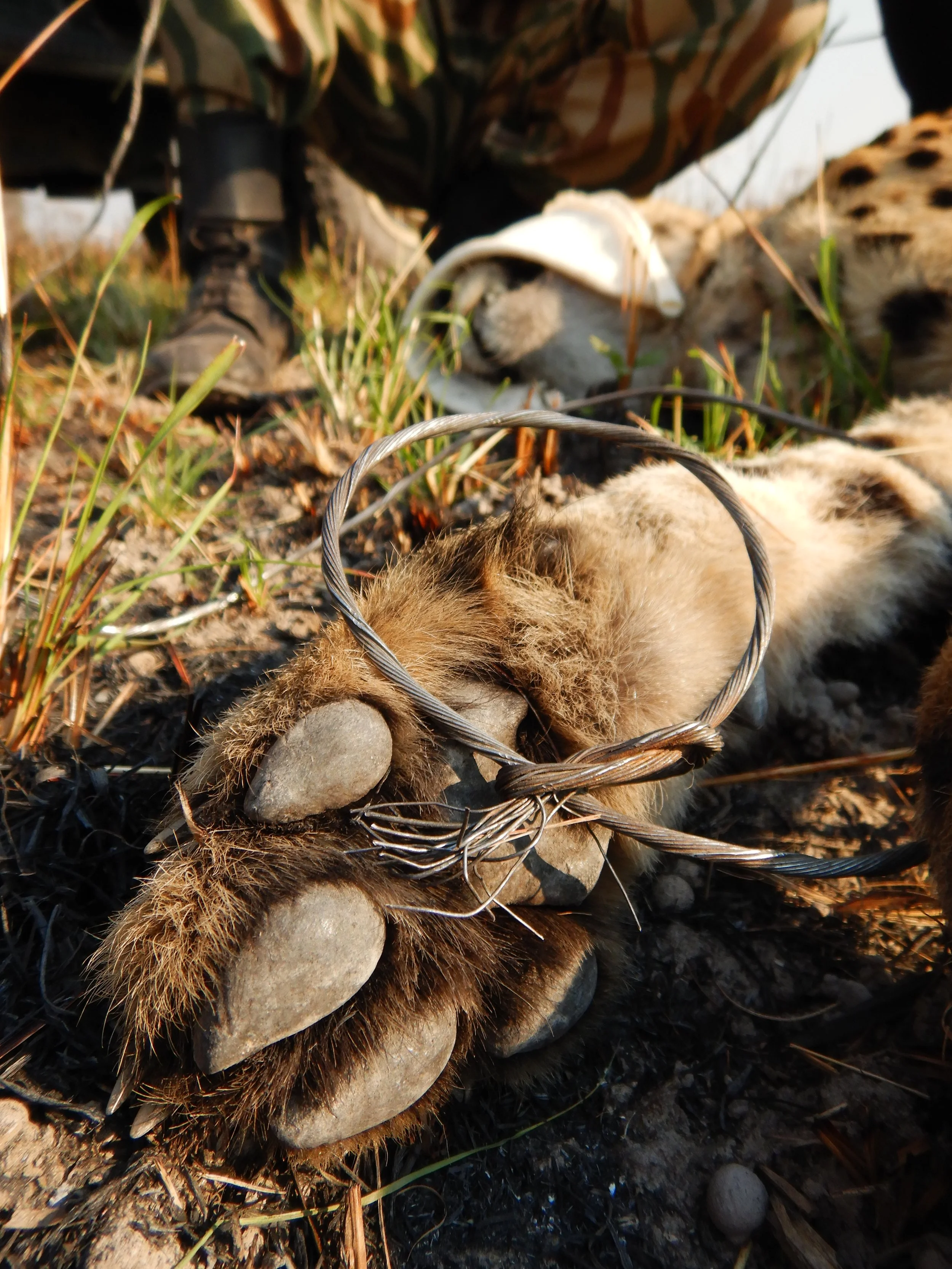RESEARCH.
As existing tracts of wilderness become more and more fragmented, it is imperative to understand the space needs of threatened wildlife species. Protected areas are essential to the preservation of large carnivores, but connectivity between these locations is equally key to the long-term persistence of such wide-ranging animals. Further, the complex ecological relationships between competing carnivore species within these constrained protected areas often leads to “winners” and “losers”, where more dominant predators can suppress or even displace the more subordinate species to areas outside of protected areas. Human impacts such as poaching, hunting, and encroachment add to an already naturally-complicated mosaic of factors that influence the conservation needs of carnivore communities.
These dominant-subordinate relationships between top predators are fascinating, and I am particularly interested in examining the ecology and conservation needs of subordinate large carnivores, particularly cheetahs (Acinonyx jubatus) in Africa and cougars (Puma concolor) in North and South America.
PhD research: Connectivity, conservation, and ecology of cheetahs in the Greater Kafue Ecosystem of the Kavango-Zambezi Transfrontier Conservation Area.
Though one of the most iconic large cats, the cheetah is sadly sprinting towards extinction. Only 7,000 cheetahs remain in an area that encompasses only 13% of their historic range; approximately 75% of cheetah populations have less than 50 individuals, and nearly 18% have less than 10. These small, vulnerable populations arise because cheetahs occur at the lowest densities of any top predator, have huge space requirements, and can be outcompeted by other large carnivores. These characteristics make them highly vulnerable to habitat loss and fragmentation, and dramatically increase their extinction risk.
The Kavango-Zambezi Transfrontier Conservation Area (KAZA) spans Zambia, Zimbabwe, Namibia, Botswana, and Angola, and is Africa’s largest remaining conservation landscape. With key populations of lion, 25% of the world’s African wild dogs, and 10% of the world’s remaining cheetahs, the KAZA is critical for the long-term persistence of Africa’s large carnivores. Current operations by the Zambian Carnivore Programme (ZCP), Panthera, and its partners support the Zambian Department of National Parks and Wildlife to secure habitat for cheetahs and to treat animals wounded by illegal snaring. But across their range, protected areas support only 2,000 cheetahs. Therefore, the long-term persistence of this species requires a collaborative and integrated approach that focuses on human-cheetah coexistence across the greater landscape. To enable informed conservation decisions, we require critical data on core cheetah populations and an understanding of how landscape levels threats such as habitat loss and fragmentation impact the density, distribution, and space use of cheetahs on a bigger scale. Within the KAZA, my research focuses on the Greater Kafue Ecosystem (GKE) of Zambia, which comprises Kafue National Park (KNP, Africa’s second largest national park) and its nine adjacent Game Management Areas. The GKE likely hosts Africa's largest undescribed population of cheetah, and ongoing studies suggest that KNP has one of the largest remaining cheetah populations of any African national park. Given that the GKE forms a substantial portion of the KAZA (23%) and is a critical population stronghold for cheetah, this landscape is crucial for regional connectivity.
To improve the ability of policy-makers to make informed conservation decisions (e.g. the effective prioritization of key wildlife corridors), my dissertation research seeks to determine what factors impact the long-term survival of the critical cheetah populations in the GKE.
Objective 1: Provide population size, density, recruitment, and survival estimates for the cheetah population in KNP, and determine what factors limit and/or threaten them.
Objective 2: Within the GKE, determine what factors influence the distribution, space use, and abundance of cheetahs
Objective 3: Examine the connectivity between cheetah populations in Zambia; identify barriers to movement, connectivity, and gene flow between KNP and other populations.
Why this work matters now:
Cheetahs are in bad shape. In late 2016, the world’s leading experts officially requested that the IUCN upgrade the conservation status of cheetahs to “endangered”. If we don’t do something soon, it is estimated that the global cheetah population will decline by another 50% in the next 15 years – down to just 3,000 individuals. Further, cheetahs are considered an “umbrella species”; by meeting the space and conservation needs of this wide-ranging species, we will also aide in the protection of many other endangered African animals such as lions, wild dogs, and elephants. In the end, science-based conservation cannot be planned or implemented without sound data. Therefore, this work will provide important knowledge on how to designate and protect key landscapes, and also provide population estimates by which to measure the success of future conservation efforts.
Masters research: The use of competition refugia by cougars in the Southern Greater Yellowstone Ecosystem
investigating a bighorn sheep killed by an adult female cougar, f109
Funded by the National Science Foundation’s Graduate Research Fellowship, my masters research investigated resource selection by cougars in the Southern Greater Yellowstone Ecosystem, specifically looking at patterns of predation and the use of competition refugia by this subordinate species.
My research examined the trade-off that cougars must balance as subordinate predators. As a top carnivore, cougars must have access to ample food (i.e. prey). Typically, however, cougars are not at the very top of their food chain. Black bears and grizzlies steal their hard-earned kills, and wolves not only steal their food but also kill cougars and their kittens. This means that cougars can’t just spend all their time hunting and eating; instead, they must also seek out safe places to sleep, rest, and raise their kittens. This requirement for safe places is scientifically referred to as “refugia”. My thesis research used statistical models to create a landscape-level map that delineated areas of high and low quality refugia habitat and hunting habitat.
Why does this matter? When most people think about the conservation requirements of most large predators, they typically focus on the availability of their food (i.e. the distribution and abundance of prey species such as deer). But the best place to hunt is not always the best place to sleep or raise kittens, and thus a cougar must find a home that can provide both types of environment. In fact, our research demonstrated that competition refugia more strongly influenced the size of cougar home ranges than did the availability of prey! We hope such knowledge will help scientists, managers, and conservationists to broaden their perspective when considering the kinds of habitats and landscapes cougars (and other subordinate predators) may need in order to make the best-possible conservation and management decisions.
Undergraduate research: The use of scent-marking trees by male cheetah in Northwestern Botswana
The Coalition males investigating one of their marking trees
Scent-marking is the primary means of communication for many wide-ranging, solitary big cats. The cheetah is one such example, and the males of this species commonly use scent-marking trees (sometimes referred to as “play trees”) to communicate with their neighbors. Researchers often set cameras at the base of marking trees to determine the presence or relative abundance of cheetahs within in area. But even though we know that these features are an important aspect of cheetah ecology, we actually know very little about the role and function of marking trees in this species’ communication and social behavior. Under the guidance of Dr. Femke Broekhuis and the Botswana Predator Conservation Trust, I examined the placement and use of scent-marking trees by a coalition of two male cheetahs in northwest Botswana. We found that the territory holders focus their scent marking efforts at marking trees within the core areas of their territory, and that there was a greater density of marking trees within these core areas. Marking sites in the core were visited by the coalition more frequently than trees situated along the periphery of the coalition’s range. Non-resident males were only detected at trees in the periphery, whereas females were detected in the core — though infrequently. Our findings provide valuable insight into the spatio-temporal attributes of these marking sites, and our results support the theory that the primary function of marking posts is for communication between male cheetahs. But it is possible that these locations likely also facilitate a less common but equally important role: the ability of potential mates to find one another.










